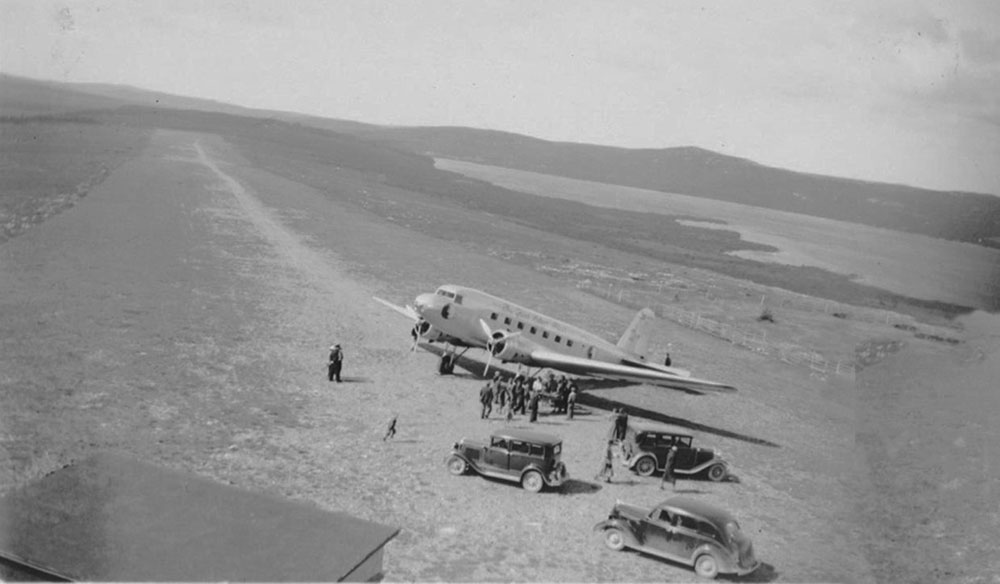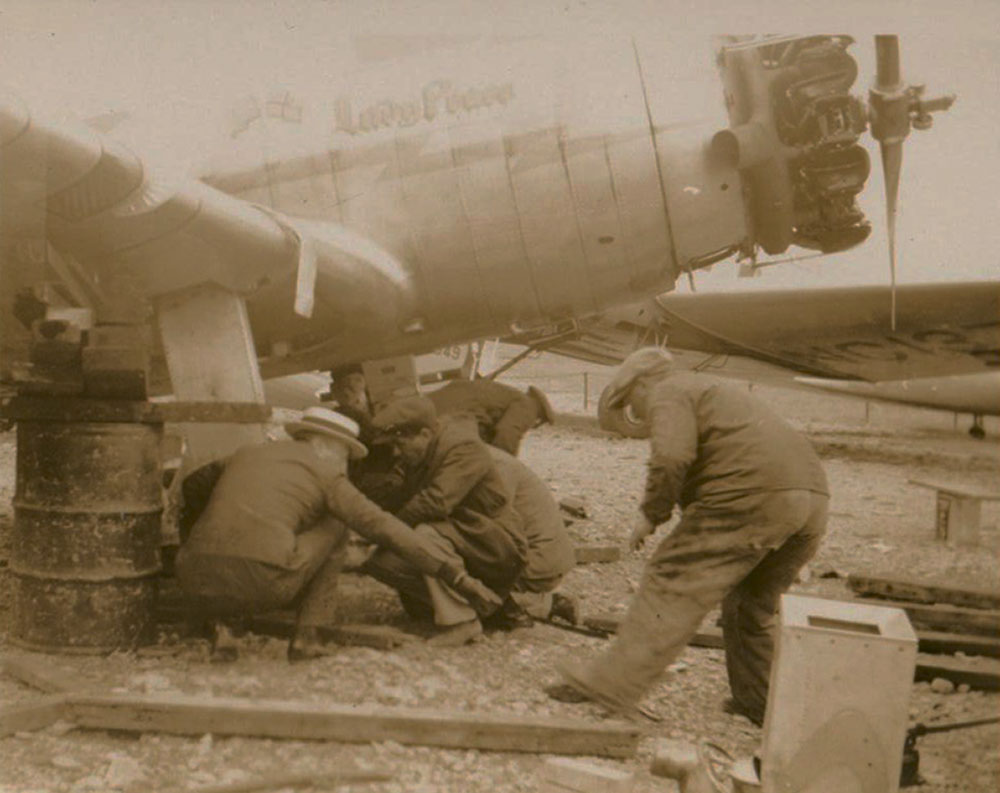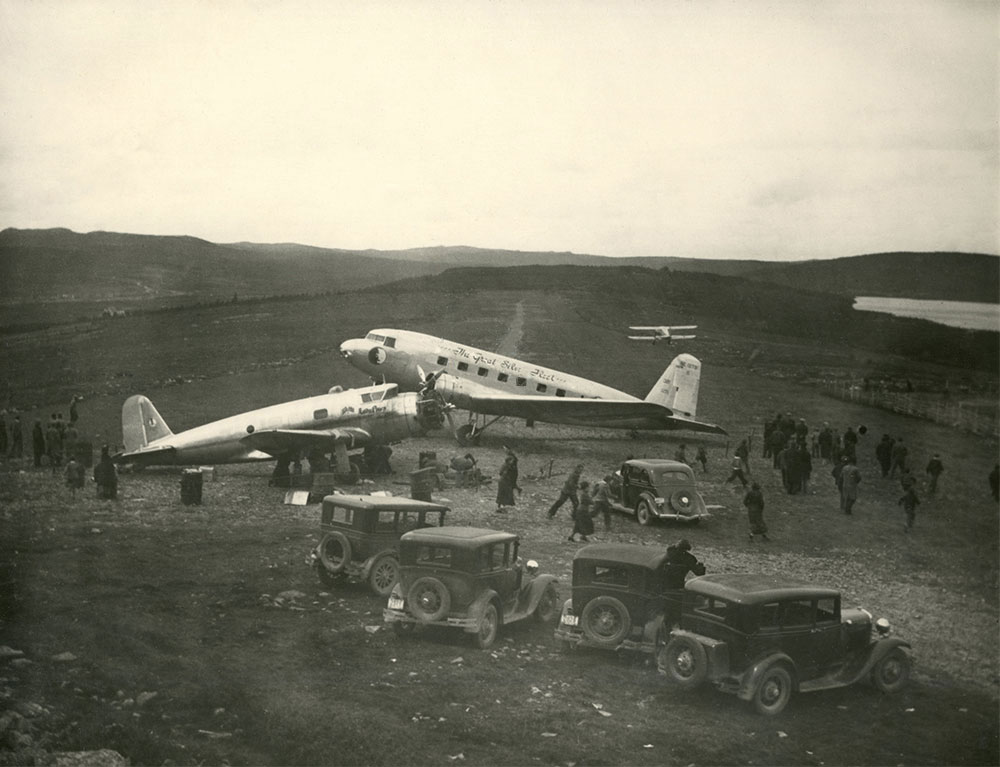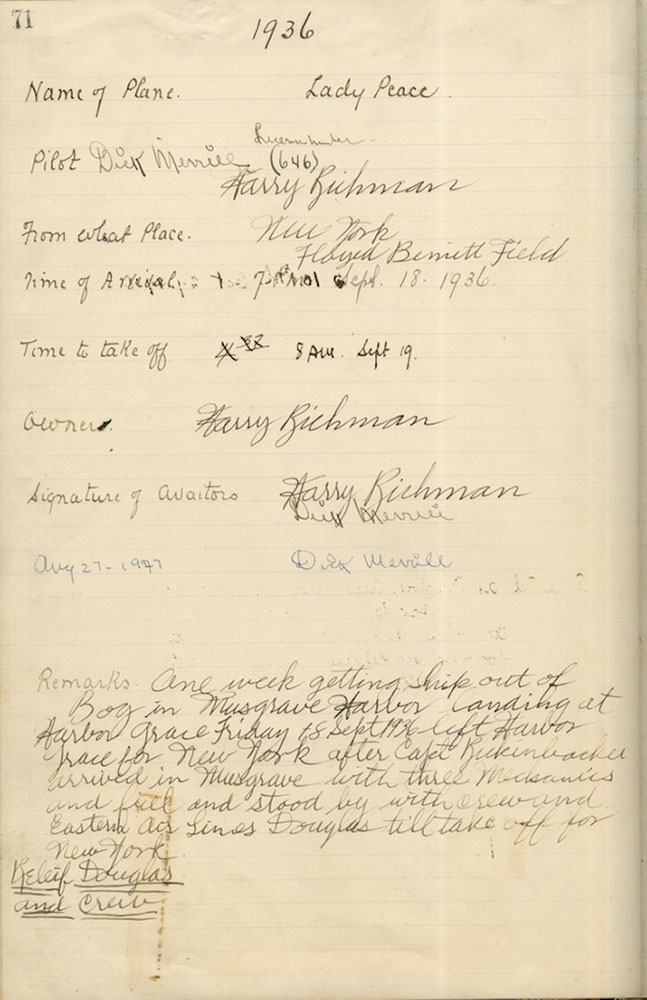Rescue of the Lady Peace (1936)
Traffic had slowed considerably at the Harbour Grace airstrip by the mid 1930s. In both 1934 and 1935, only two planes passed through, the Warsaw and the Northrop Alpha. The airstrip had fallen into disrepair.
In 1936, two pilots had to be turned away while the runway was raked and cleared. And yet, despite these maintenance concerns, in September 1936, the airstrip hosted its largest congregation of aircraft since its first construction.
That fall, showbiz singer Harry Richman and Eastern Air Lines’ chief pilot Henry T. (“Dick”) Merrill had ambitions to be the first men to cross the Atlantic on a round-trip flight.
For the journey, Richman purchased and modified a Vultee V1-A, which he named Lady Peace. Their flight plan was to leave from New York, land in London, and return stateside the next day.
Their flight was a story of two halves. Indeed, the first haul of their journey went remarkably well, with Richman and Merrill beating the day’s transatlantic speed record.
However, their return was not so favourable. Accounts differ on what exactly happened, but a mid-flight loss of fuel forced the pair to attempt a crash landing at Musgrave Harbour, Newfoundland, in a bog known as Man Point Marsh. Miraculously, Richman and Merrill walked away from the wreckage unharmed.
Now marooned in the small outport, they wired Eastern Air Lines requesting supplies to repair their plane. General manager of the company, Eddie Rickenbacker, the United States’ most decorated World War I flying ace, stepped in to help immediately.
Rickenbacker arrived in Harbour Grace with two mechanics, one hundred gallons of fuel, a spare battery, and a propeller for the Lady Peace, with plans to charter a boat to bring the equipment to Musgrave Harbour. The crew’s plane, a Douglas DC-2 named the Great Silver Fleet, was the largest plane to ever land at the Harbour Grace airstrip.
News soon spread of the crash of the two famous aviators and Rickenbacker’s rescue plans. A flurry of activity followed, with several news planes following Rickenbacker to Harbour Grace and onward to Musgrave Harbour.
After repairs, the Lady Peace made the short flight to Harbour Grace, landing on the evening of September 18. Its entourage followed behind, making September 1936 the largest congregation of planes at the airstrip to date.





